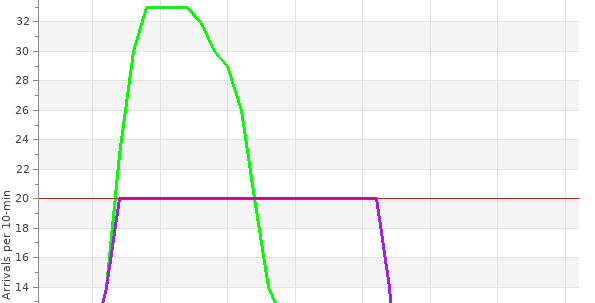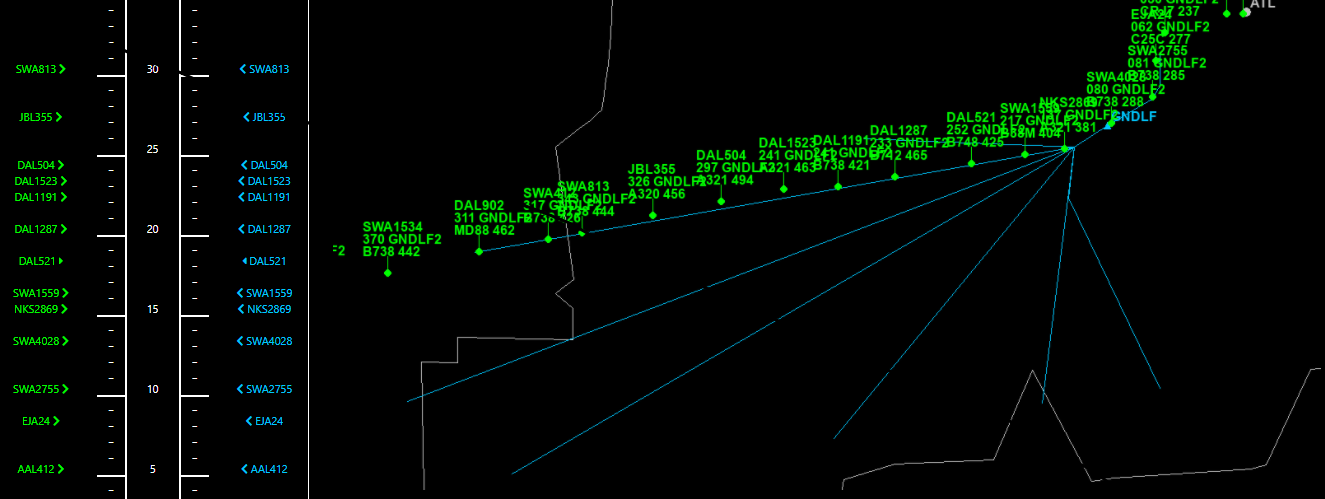Information We Collect
To help enhance the virtual air traffic control experience, we collect information across a series of products and services all to enhance the end user's experience. We collect information in the following ways:
- Information you give us. When you register an account with VATSIM and use that account to sign-in on SimTraffic, information that is generally considered personal is given to us from you and VATSIM to include, but is not limited to: your name and email address.
- Information we get from you. Some other information is passed by your computer or electronic device, web browser, and VATSIM client. Information can include: your IP address, web browser type and version, device specific information (such as operating system, unique device identifiers and mobile network information). This information may be linked to your account.
- Log Information. Each time you perform an action on SimTraffic, your action is logged. Information logged can include: type of action, data being sent and received, IP address the request originated from, software used to make the request, identification cookies, and the results of the request.
- Location Information. Your location information may be associated with each request through geolocation against the originating IP address, information given to us by you or given to us by you through VATSIM.
- Storage Location. Data is stored and encrypted on services owned or leased by SimTraffic within the United States.
Information Usage
To help enhance the virtual air traffic control experience, we collect information across a series of products and services all to enhance the user experience.
We use the information collected to provide, maintain, protect and improve our services.
The information we collect is maintained with confidentiality to the extent possible. The following information is shared with SimTraffic associated facilities:
- VATSIM CERT Identification Number (CID)
- Your name
- Your VATSIM achievements and ratings
- Your VATSIM associated email address
- ARTCC facility associations, VATSIM region and division associations
SimTraffic does not make any personal information available to the public, however the following information may be seen by users logged into the system:
- VATSIM CERT Identification Number (CID)
- Your name
- ARTCC staff associations and ARTCC staff email addresses
- ARTCC facility associations, VATSIM region and division associations
- VATSIM achievements and ratings
The following information is collected and may be used to protect our services, up to and including cooperation with legal requests for information from law enforcement agencies:
- The above listed public information,
- All IP addresses used and associated with your account
- Geolocation against aforementioned IP addresses
- Activities performed with SimTraffic web services
We may store identification tokens and other limited information on your electronic device through web storage or cookie usage.
Who We Share With
The information we collect may be shared, in limited capacities, with the following:
- Virtual Air Traffic Simulation Network (www.vatsim.net)
- VATUSA (www.vatusa.net)
- VATCAN (www.vatcan.ca)
- Other Virtual ARTCC partners
- Law enforcement agencies
For more information on what is shared with whom, please see "Information Usage".
Cookie Usage
When you visit any website, it may store or retrieve information on your browser, mostly in the form of cookies. This information might be about you, your preferences or your device and is mostly used to make the site work as you expect it to. The information does not usually directly identify you, but it can give you a more personalized web experience. SimTraffic uses cookies to identify your browser or device.
Our cookies are used to keep your session active so you do not need to login each time you visit SimTraffic and to remember how you set controls so they are the same the next time that you return. Cookies allow us to know who is requesting and using our services, provide authentication and authorization checks to restricted areas.
You may choose to disable cookie usage via your browser, but know that doing so will prevent access and use across restricted areas of the website and severely degrade your experience. We do not make use of marketing or tracking cookies.
Opt Out
Given the nature of our services, it is not possible to opt out of data collection and use our services. But if you desire to opt out and no longer desire to use our services, we will purge all information we have collected upon written request.
The first step is to deactivate and request VATSIM to purge your data. Please head to https://membership.vatsim.net to do so.
After VATSIM has purged your data, please send a written request to the compliance email address listed below. It is a manual process, so please allow up to 30 days for information to be purged. You will receive an email response once the data has been purged.
Note SimTraffic cannot guarantee that information collected by parties outside of SimTraffic will be purged in the process.
Compliance
GDPR SimTraffic is a US-based service but recognizes that virtual air traffic control caters to a worldwide audience. The previous paragraphs of this statement describe the data that SimTraffic stores. At your request, SimTraffic will comply with applicable privacy rights under the GDPR.
CCPA Similar to rights under the GDPR, SimTraffic complies with CCPA rights and will provide required services to California residents at their request.
COPPA As a VATSIM-associated service, SimTraffic fully supports and complies with the VATSIM Code of Conduct and User Agreement. As such, we do not allow children under the age of 13 to access or utilize our services. Parents may exercise their rights under COPPA on request.
Compliance-related requests may be sent to [email protected]
Legal Notice
SimTraffic is provided free-of-charge. No warranty is implied. By using the service the user accepts all responsibility for how they use the provided information and tools. By using this site, you agree to hold SimTraffic, it’s operator and developer harmless and also agree to forfeit any rights to litigation in connection with your knowledge or use of this service.
Right to Terminate/Refuse Service
The operator of SimTraffic maintains the right to limit or deny access to anyone, at any time, without prior notice.
Disclaimer!
All information on this website is for flight simulation use only and is not to be used for real world navigation or flight. This site is not affiliated with ICAO, the FAA, any actual ARTCC, or any other real world aerospace entity. User agrees to not use any data or product offered by SimTraffic for real aviation operations.





